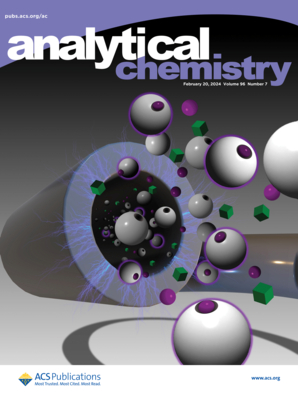Single-Stranded DNA Triple Allosteric-Assisted Logic Gates Enabled Photoelectrochemical Multiplex Detection of Waterborne Viruses.
IF 6.7
1区 化学
Q1 CHEMISTRY, ANALYTICAL
引用次数: 0
Abstract
Conventional photoelectrochemical (PEC) sensors with a single recognition interface frequently exhibit limitations in delivering comprehensive concentration information for target analytes in multiplex detection systems. The present work leverages the triple allostery of single-stranded DNA conformation to construct a "signal-on" and "signal-off" switchable PEC sensing platform, thereby propelling the advancement of DNA logic gate-integrated PEC analytical systems toward precise quantification and multiplex qualitative analysis of viruses in aquatic environments. The engineered OR-type logic gate-integrated PEC platform, harnessing the dual metal ion enzyme-mediated cascade signal amplification system, exhibited superior quantitative performance for dual-virus detection with a wider linear range from 0.01 to 100 nM and a low detection limit of 69 fM for Norovirus (Nov) and 84 fM for Rotavirus (Rov). Practical validation studies demonstrated that the AND-type logic gate-empowered PEC system displays an accurate qualitative capability for multiple target viruses, thus highlighting its potential for complex environmental monitoring. This work, based on the signal probe conformational allosteric-assisted DNA logic gate-enabled PEC multiplex detection, is expected to provide novel insights into the transduction mechanisms of multiplex detection signals and offer new perspectives for advanced multiplex PEC sensor development.单链DNA三变容辅助逻辑门实现水传播病毒的光电复合检测。
在多路检测系统中,具有单一识别界面的传统光电化学(PEC)传感器在为目标分析物提供全面的浓度信息方面经常表现出局限性。本研究利用单链DNA构象的三重变构,构建了一个“信号开启”和“信号关闭”可切换的PEC传感平台,从而推动了DNA逻辑门集成的PEC分析系统向水生环境中病毒的精确定量和多重定性分析的方向发展。利用双金属离子酶介导的级联信号放大系统,设计的or型逻辑门集成PEC平台在双病毒检测中表现出优异的定量性能,线性范围为0.01 ~ 100 nM,对诺如病毒(Nov)和轮状病毒(Rov)的检出限分别为69 fM和84 fM。实际验证研究表明,与型逻辑门增强的PEC系统对多种目标病毒显示出准确的定性能力,从而突出了其在复杂环境监测中的潜力。这项基于信号探针构象变构辅助DNA逻辑门的PEC多路检测的工作,有望为多路检测信号的转导机制提供新的见解,并为先进的多路PEC传感器的开发提供新的视角。
本文章由计算机程序翻译,如有差异,请以英文原文为准。
求助全文
约1分钟内获得全文
求助全文
来源期刊

Analytical Chemistry
化学-分析化学
CiteScore
12.10
自引率
12.20%
发文量
1949
审稿时长
1.4 months
期刊介绍:
Analytical Chemistry, a peer-reviewed research journal, focuses on disseminating new and original knowledge across all branches of analytical chemistry. Fundamental articles may explore general principles of chemical measurement science and need not directly address existing or potential analytical methodology. They can be entirely theoretical or report experimental results. Contributions may cover various phases of analytical operations, including sampling, bioanalysis, electrochemistry, mass spectrometry, microscale and nanoscale systems, environmental analysis, separations, spectroscopy, chemical reactions and selectivity, instrumentation, imaging, surface analysis, and data processing. Papers discussing known analytical methods should present a significant, original application of the method, a notable improvement, or results on an important analyte.
 求助内容:
求助内容: 应助结果提醒方式:
应助结果提醒方式:


